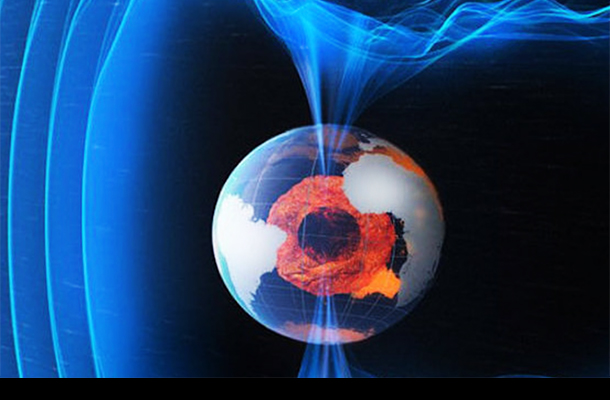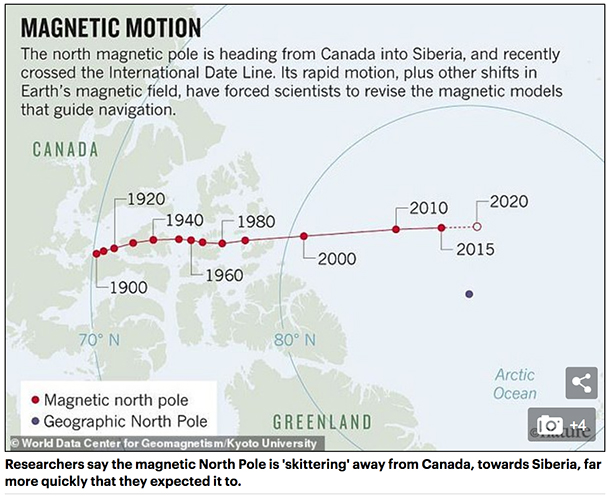
Are the earth’s poles shifting? If so which poles?
When evaluating pole shifts, there are both “magnetic” pole, and “geographic” pole shifts. These can occur simultaneously, but their affects on the Earth are quite different.
Mainstream scientists have now concluded that Earth’s “magnet” poles do flip 180 degrees in what’s commonly called a “pole shift,” occurring anywhere from 10,000 years to almost 800,000 years. Causes for these movements include factors such as major movements in magnetic fields of rock or liquid magma located above and below the Earth’s surface.
That process is very much on the move today. Recently reported rapid shift in the earth’s crust could pose continual problems for the new digital economy which is now reliant on properly calibrated GPS systems.
New reports suggest a quickening of the process, exceeding rates of change compared to past epochs.
RT International reports…

Earth’s magnetic field, the basis for modern global navigation systems, is constantly in some state of flux. However, it now seems to be going haywire, pushing the North Pole closer to Siberia, and no one’s sure why.
The field changes as the molten metals surrounding the earth’s solid iron core churn and flow, creating electric currents and a corresponding magnetic field. As a result, the magnetic poles tend to shift slightly as a matter of course.
However, researchers don’t know what’s causing the magnetic field to now move so quickly.
The north magnetic pole sped across the International Date Line last year at a rate of 55 km per year, more than three times as fast as it moved before the mid-1990s. Now located in the Eastern Hemisphere, it’s moving away from Canada and approaching Siberia.
Scientists think a high-speed jet of liquid iron under Canada could be responsible for the pole’s movement, weakening the magnetic field below and allowing Siberia to draw over the pole, Nature reports.
“The location of the north magnetic pole appears to be governed by two large-scale patches of magnetic field, one beneath Canada and one beneath Siberia,” University of Leeds geomagnetist Phil Livermore told a recent American Geophysical Union meeting. “The Siberian patch is winning the competition.”
In general, the World Magnetic Model (WMM) is updated at five-year intervals to ensure modern navigation keeps up with the changes in the Earth’s magnetic field. It was due to be reconfigured next in 2020, but was so out-of-whack by 2018 that a more urgent update was needed.
Researchers at the British Geological Survey and the National Oceanic and Atmospheric Administration (NOAA) have been working to correct the WMM using three years of recent data, including a 2016 pulse that threw their last model’s accuracy off.
The scientists were due to release the latest update next week – if the US government hadn’t shut down, hamstringing NOAA’s operations. Now the release has been postponed to the end of January. The team hopes this model lasts until 2020.
READ MORE SCI-TECH NEWS AT: 21st Century Wire Sci-Tech Files
SUPPORT 21WIRE – SUBSCRIBE & BECOME A MEMBER @21WIRE.TV















